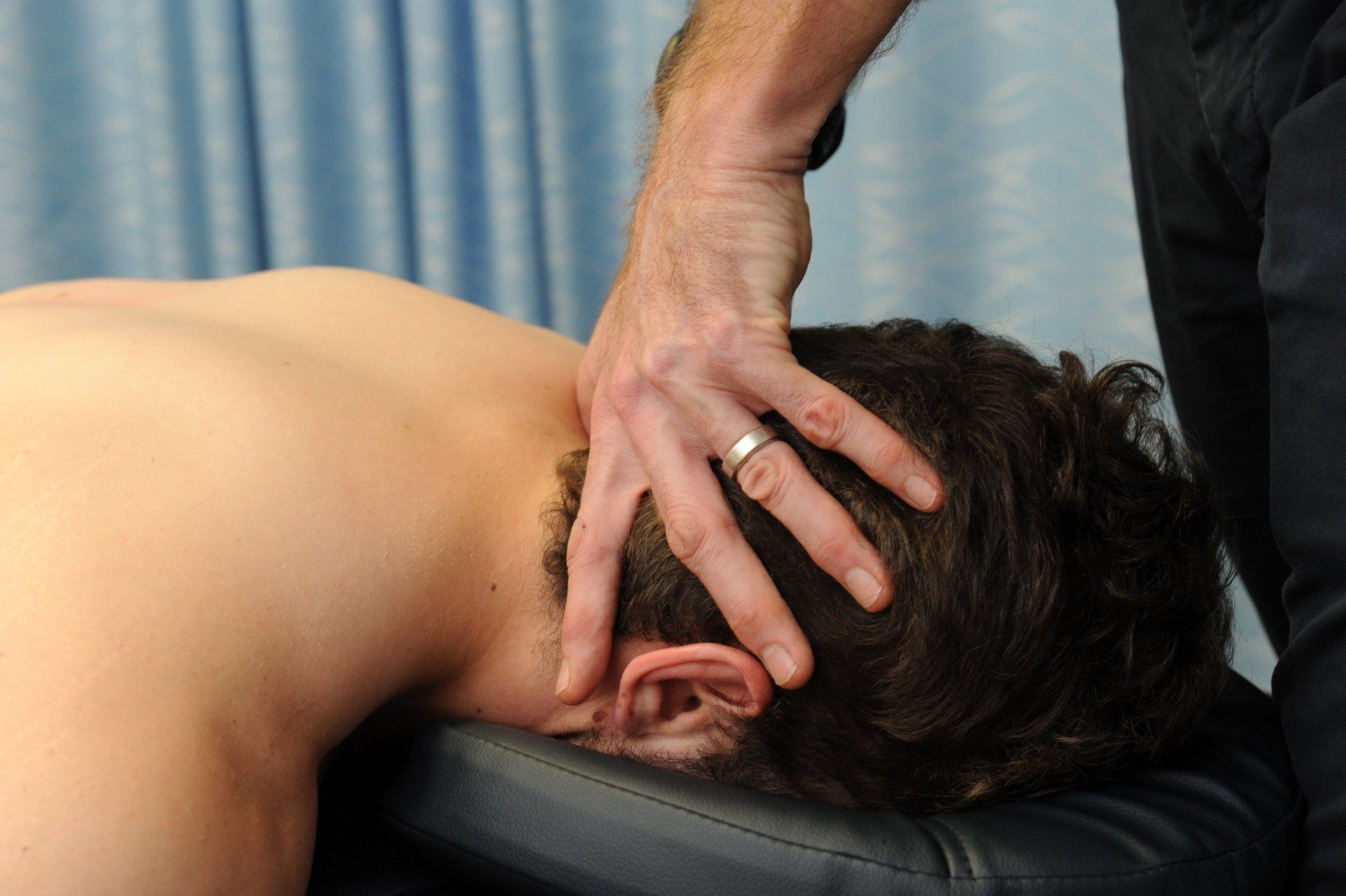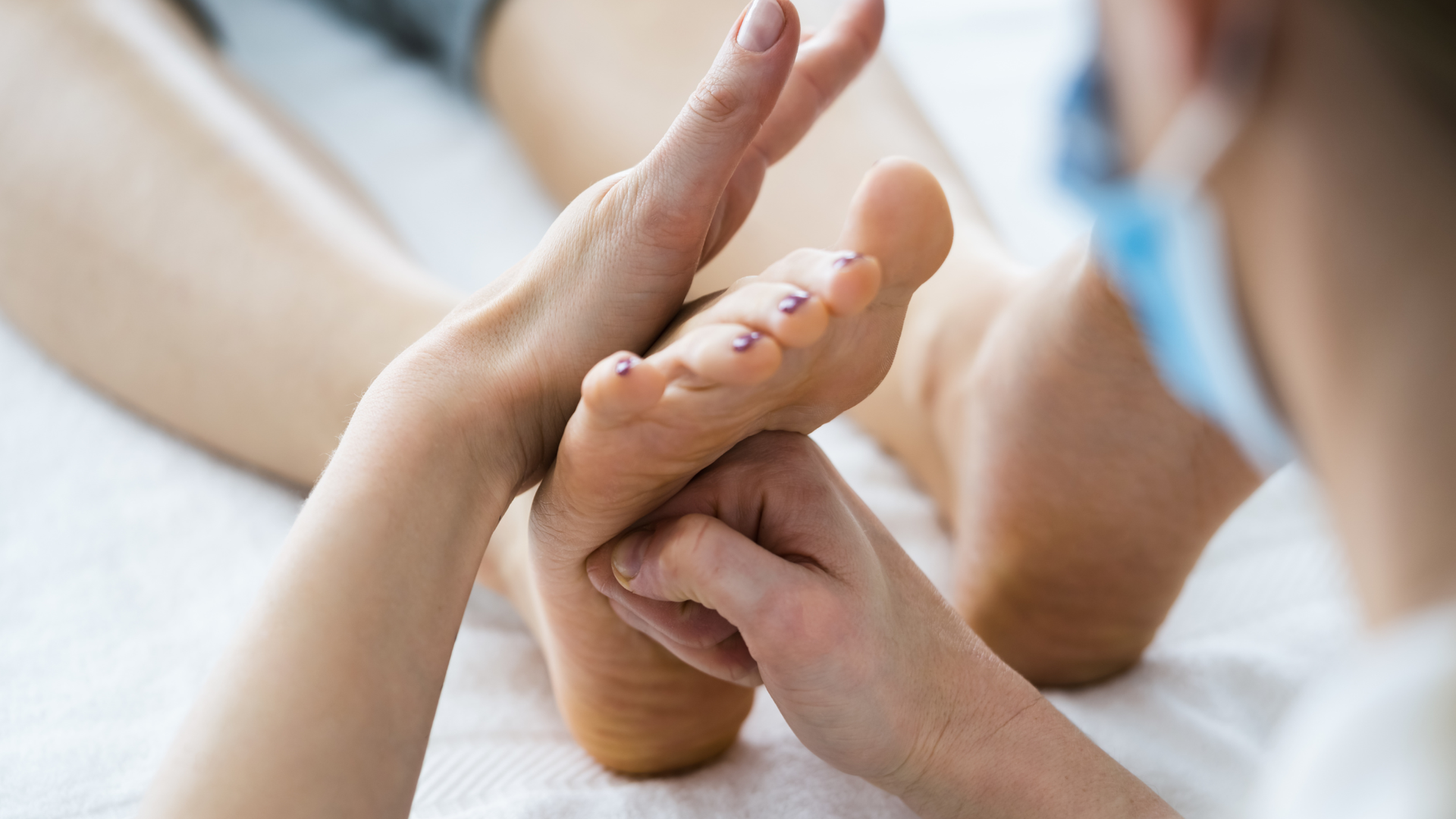The Neck - Multifocal glasses and neck pain
How multifocal glasses contribute to neck pain and what you can do.

Have you recently been prescribed multifocal glasses or contact lenses and found you now have neck pain? You’re not alone. Clinical experience and research-based evidence is demonstrating that, combined with increased computer and personal device usage, multifocal lenses are contributing to an increase in upper cervical postural dysfunction and computer-related neck pain.
How so?
Firstly, some basic anatomy. The spine is divided into 3 sections - the lumbar spine, consisting of 5 vertebrae, the thoracic spine consisting of 12 vertebrae, and the cervical spine, where we have 7 vertebrae. Each vertebra has a body, which is separate from the vertebral body below by a disc. Facet joints are the articulation between any two vertebra, and are responsible for guiding movement and providing a bony limit to movement.
In the cervical spine, facet joints are orientated to allow a variety of movement, including flexion and extension, rotation, and side flexion. The overall S-shape of the entire spine allows these movements to be optimal, with even joint pressure distribution in the neutral position.
Postural Dysfunction
Postural dysfunction has been common in office and computer-based workers for many years. However, there is an increase in occurrence resulting
from greater use of hand help devices across both genders and all age groups.
Postural dysfunction occurs as a result of loss of the normal S-shape of the spine.
When we sit at a computer workstation for long periods, we fatigue. The normal lordosis in the lumbar spine is lost, shifting our body weight and centre of gravity backwards. We counter this by dropping the shoulders forwards and ‘poking’ the chin. In the cervical spine, this posture increases extension in the upper part of the neck (just below the head) and flexion in the lower part of the neck. This redistributes pressure on the facet joints, and after a while they get unhappy, resulting in pain and stiffness. If repeated day in day out, the body starts to adapt, increasing the length of some muscles and shortening others, and resulting in weakness in key postural muscles.
What’s the impact of Multifocal lenses?
In simple terms, multifocal glasses (or contact lenses) have a lens that transitions to allow for both short-sighted and long-sighted issues. The bottom half of the lens is great for close vision, like reading a book or looking at a screen, while the upper part of the lens adjusts for long vision, such as driving. For the office worker, problems can arise in the neck because the wearer can no longer just move the eyes (or the gaze) up to see the top half of the screen. To do so can be blurry due to the different correction in the lens. Instead, the wearer must tilt the head upward so that they can see the right part of the screen through the right lens.
Consider this. For most of us, multi-focal glasses are something that come with advancing age and, if we’ve been in an office job for a few years or more, postural dysfunction may already be well established. Add to this greater upper cervical extension to see through the right part of the multi focal lens, and the neck gets pretty grumpy, pretty quickly.
Signs and symptoms
Computer related neck pain is a chronic condition that arises gradually, becoming more persistent and difficult to manage without help. Initially, pain and discomfort are intermittent, with onset generally later in the day or evening, with tightness in different neck muscles. Some relief can be found with heat, massage and stretching.
Overtime, as postural adaptations progress and muscles become weaker, joint loading becomes more sustained, resulting in persistent pain, increasing neck stiffness, loss of range of movement and difficulty with work and home activities. Posturally there is loss of the normal S-shape of the spine.
Patients with this type of neck pain have flattening of the lumbar lordosis, rounding off the shoulders and a forward head, or ‘poking chin’ position.
Oh, and they possibly changed to multifocal lenses in the past 6-12 months!
The Solution.
There is plenty that can be done for this type of neck pain and, while it can take a while, good outcomes are possible. Firstly, consider a simple ergonomic assessment of your workstation. These can be done by most good Physio’s (and yes, we can do these!). Updating and adjusting your workspace can have an immediate impact on symptoms and improve productivity and happiness at work.
Next, see a Physio. Some local treatment will assist with symptom management, freeing up stiff joints and loosening tight muscles. Massage, dry needling, and manual therapy all have a role here, with good short-term results.
Finally, exercise. This cannot be emphasised enough. Addressing those muscle imbalances and restoring normal posture is the key to long term improvement. We’re talking deep neck flexors, scapula stabilisers and core stability. As a starter, we might try some chin tucks, standing rows and some planks to engage key postural muscles. Your neck will be better for it, as will your shoulders and lower back.
The Take Home.
Computer related neck pain is a common presentation, exacerbated by the increased prescribing and usage of multifocal lenses, and increasing in frequency in the community with the increase in handheld device usage. Acute symptoms of pain and stiffness respond well to Physiotherapy intervention, while exercise forms the bedrock of long-term management.
Do you have neck pain? Think it might be related to your new glasses or workstation?
Give us a call. We are part of a well-connected network of physiotherapists, massage therapists, doctors and surgeons
and can treat and manage neck pain with a personalised, goal-oriented and comprehensive approach.
Call now on 08 8945 3799 or book online.
Sources
- Abbas RL, Houri MT, Rayyan MM, Hamada HA, & Saab IM (2019). Effect of unifocal versus multifocal lenses on cervical spine posture in patients with presbyopia. International Journal of Occupational Safety and Ergonomics, 25(1), 148-152.
- Bartha MC, Allie P & Kokot D. (2020). Field Observations of Placement for Large-Panel Flat and Curved Displays for Presbyopic and Prepresbyopic Computer Users. In Proceedings of the Human Factors and Ergonomics Society Annual Meeting (Vol. 64, No. 1, pp. 526-530).
- Becker M, Rothman J, Nelson AJ, Freedland R, Garcia D, Feit L, Barth J and Sabini R (2007). The effects of multifocal refractive lenses on occipital extension and forward head posture during a visual task. Ergonomics, 50(12), pp.2095-2103.
- Friedrich M, Kothe J, Seidel E and Beyer L (2014). Relation between head and eye movement and neck and shoulder complaints in presbyopic VDU users. International Musculoskeletal Medicine, 36(1), pp.26-31.
- Poursadegh M, Azghani MR, Chakeri Z, Okhravi SM & Salahzadeh Z. (2023). Postures of the Head, Upper, and Lower Neck in Forward Head Posture: Static and Quasi-static Analyses. Middle East Journal of Rehabilitation and Health Studies, (In Press).
- Sageer, MM. Study on prevalence of forward head posture among young individuals wearing eye glasses. www.ijmaes.org, www.jmmodernpublishers.ijmaes.org.








